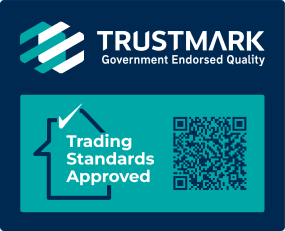In the realm of residential building design and construction, ensuring thermal comfort is paramount for creating liveable and sustainable spaces. TM59 compliance, a standard developed by the Chartered Institution of Building Services Engineers (CIBSE), plays a crucial role in assessing and mitigating the risk of overheating in residential buildings. This blog will explore the significance of TM59 compliance, the criteria for assessment, and best practices for ensuring thermal comfort in residential properties.
Understanding TM59 Compliance
TM59 compliance focuses on the assessment of thermal comfort within residential buildings, particularly during the summertime. It provides a framework for evaluating the risk of overheating and sets criteria to guide the assessment process. The key criteria for TM59 compliance include:
- Occupancy Threshold: Establishes a threshold of internal temperatures above which occupants are likely to experience discomfort.
- Design Conditions: Considers the design conditions for building elements and their impact on indoor temperatures during hot weather.
- Mitigation Strategies: Identifies potential mitigation strategies to reduce the risk of overheating, such as natural ventilation, shading, and passive cooling measures.
Importance of TM59 Compliance in Residential Buildings
Occupant Well-being and Health
TM59 compliance is essential for safeguarding the well-being and health of residents within residential buildings. By adhering to TM59 criteria, property owners and developers prioritise creating spaces that provide comfortable and safe living environments.
Regulatory Compliance
Ensuring TM59 compliance is crucial for meeting regulatory requirements and standards related to thermal comfort in residential buildings. It demonstrates a commitment to addressing overheating risks and promoting sustainable building practices.
Energy Efficiency and Sustainability
Effective management of TM59 compliance can lead to improved energy efficiency, reduced reliance on mechanical cooling systems, and lower energy consumption, contributing to sustainable and environmentally conscious residential developments.
Best Practices for Ensuring TM59 Compliance
Passive Design Strategies
Incorporating passive design strategies such as natural ventilation, shading devices, and thermal mass into the architectural design of residential buildings can significantly reduce the risk of overheating and enhance thermal comfort.
Dynamic Thermal Modelling
Utilising dynamic thermal modelling during the design phase allows for a comprehensive assessment of a building’s thermal performance. It provides valuable insights into potential overheating risks and aids in the development of effective mitigation strategies.
Material Selection and Insulation
Careful selection of building materials and insulation solutions can contribute to reducing heat gain and maintaining comfortable indoor temperatures. High-performance insulation and reflective materials can help minimise the impact of external heat on residential buildings.
Solar Shading and Glazing Optimisation
Strategically incorporating solar shading devices and optimising glazing to control solar heat gain can significantly influence the indoor thermal environment. Well-designed shading solutions and glasing specifications can mitigate overheating risks.
Natural Ventilation and Cross Ventilation
Promoting natural ventilation and cross ventilation within residential buildings enhances air circulation and cooling, reducing the reliance on mechanical cooling systems and contributing to TM59 compliance.
Assessment of External Conditions
Considering the external climatic conditions and microclimate around residential buildings is essential for understanding the potential impact on indoor thermal comfort. Site-specific assessments help in tailoring mitigation strategies to specific environmental factors.
Conclusion
TM59 compliance is a critical aspect of ensuring thermal comfort in residential buildings, aligning with the broader goals of occupant well-being, regulatory compliance, and sustainability. By embracing best practices such as passive design strategies, dynamic thermal modelling, material selection, solar shading optimisation, and natural ventilation, residential property owners and developers can effectively manage overheating risks and ensure compliance with TM59 criteria.
By prioritising TM59 compliance, residential buildings can provide comfortable, sustainable, and resilient living spaces that support the well-being of residents and contribute to a more energy-efficient future. If you need assistance in ensuring TM59 compliance for your residential property, our team of experts is here to guide you through the process and ensure optimal thermal comfort and compliance.




